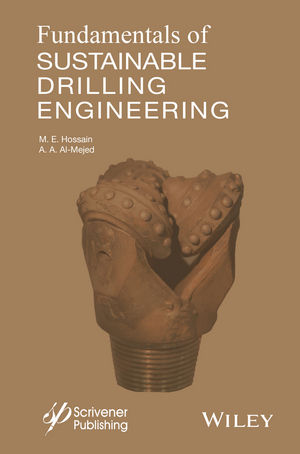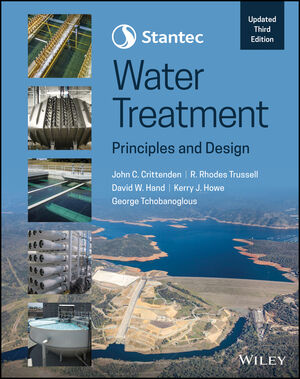
National Driller January 2006 e-Newsletter
An international team worked on the verge of the Sahara to gather data on the ground and in the air, to be compared with imagery of the same region acquired by European Space Agency (ESA) satellites. The results will be used in support of an ambitious project to apply satellite remote sensing to improve monitoring and management of vast water aquifers concealed beneath the desert.
High-resolution radar as well as hyperspectral optical imagery was acquired during flights across two test areas in southern Tunisia. Meanwhile, ground teams precisely documented ground vegetation and terrain at sampling sites within these test areas, with samples taken to local laboratories for detailed analysis. And ESA's Envisat, ERS-2 and Proba satellites acquired images of these sites around the same time.

The Sahara has altered through the ages: During the last Ice Age, 10,000 years ago, there was savannah here with rivers, lakes and plentiful rains. That landscape has vanished now, but the rains from that period progressively percolated beneath the ground to be collected in aquifers.
This “fossil water” today is used in North African nations for irrigating agriculture and to support population growth. It is a valuable resource but also a non-renewable one - distributed across national boundaries - which requires careful management to be employed in a sustainable way. Over-exploitation risks exhaustion of ground water, plus loss of artesian pressure to put remaining supplies out of reach or induce contamination from nearby saline water deposits.
Working with partners including African water agencies, ESA has commenced a project called Aquifer to develop satellite-derived products and services to support the sustainable management of ground water. Planned products include land-use and land-cover maps, change maps, surface water extent and dynamics, digital terrain models and estimates of water consumption and extraction. These required products were identified by the involved water agencies in Tunisia.
Aquifer takes place within the framework of the TIGER Initiative, aimed at applying Earth Observation technology to improve availability and management of water resources, with a particular focus on Africa.
Late last fall, a weeklong campaign in southern Tunisia known as the AquiferEx Airborne, Optical and Radar Campaign was overseen by ESA's dedicated Campaign Unit. AquiferEx involved gathering a baseline dataset to support Aquifer product definition for two test areas of southern Tunisia, the Ben Gardane and Gabés regions. Each about 10,000 hectares in size, these test areas are representative for agricultural crops, natural pastures and irrigation practices.
Both sites are located above the vast North-Western Sahara Aquifer System (better known in French as the Systeme d'Aquiferes du Sahara Septentrional or SASS) and the interconnected Djeffara aquifer on its northern boundary, which stretches across nearly 390,000 square miles of Algerian, Libyan and Tunisian territory, and is one of the working areas of the Aquifer project.
The two sites have significant differences: Ben Gardane to the south suffers from wind erosion and its ground water is undergoing salinization due to invading sea water. Gabes farther north includes several oases and ground water at various levels, but its deep-level fossil water has been exhausted in many places.
A Dornier Do-228 aircraft flown by the German Aerospace Center (DLR) was the platform for two airborne sensors operating simultaneously: the Experimental Synthetic Aperture Radar (E-SAR) built by DLR, which can acquire imagery at differing radar wavelengths and polarizations, and the Airborne Visible Imaging and Infrared Imaging Spectrometer (AVIS), built by the University of Munich, which gathers additional environmental and vegetation information by observing across dozens of spectral bands invisible to the human eye.
"The hyperspectral and radar data of AquiferEx will allow refined land use and land cover mapping," explains Aquifer project manager Stefan Saradeth, of Munich-based GAF AG. "From there, it is planned to derive improved estimates of water consumption in agriculturally-utilized areas. AquiferEx also provides a baseline dataset for the validation of other Aquifer results, and the hyperspectral and radar data will be used to develop a range of science products, demonstrating future development lines and showing the potential of new sensors."
At the same time as the Dornier was flying out of Tunisia's Djerba International Airport, Tunisian and European participants on the ground gathered information including the size and position of fields, local topography, the soil surface characteristics and vegetation type, distribution and parameters such as leaf area index and wet and dry biomass. Measurements had to be as authoritative as possible; for example, close-up three-dimensional photographs were taken of plant rows and soil roughness while sap flow measurements made for olive trees. Samples were analyzed in Tunisian laboratories, and weather conditions also were documented.
"The conditions for the ground teams were a lot rougher," says Rolf Scheiber of DLR, who manages the AquiferEx project. "The southern test site of Ben Gardane is a pretty remote place, and it took the ground team quite some time to reach it. The accessibility within the site was also restricted … even using four-wheel drive cars, the northern part of the site could not be reached due to shallow water obstacles. In general, without the cooperation and help of local institutions providing guiding experts and lab facilities, the performance of ground measurements would have been very limited."
Tunisian researchers from the Engineering University of Sfax (ENIS) also participated in ground work, joining personnel from DLR, the University of Munich, Delft University of Technology and the International Institute for Geo-Information Science and Earth Observation (ITC) in the Netherlands.
"AquiferEx is a good example of the fruitful interplay between satellite remote sensing, air-borne campaigns and ground-truthing," adds Saradeth. "It demonstrates the complementary nature of each and emphasizes their individual importance. AquiferEx and Aquifer stand also for successful cooperation between operational water management entities, research and development institutes and private companies - spanning Africa and Europe."
AquiferEx Results
Following formal export authorization of acquired radar and hyperspectral data from the Tunisian Ministry of Defence, the AquiferEx results will be evaluated jointly by DLR and the Aquifer project team, including national remote sensing institutes in the SASS countries - most prominently Tunisia's Centre National de Télédétection (CNT) and the European partners GAF AG, the University of Munich, Munich-based company Vista GmbH and Toulouse-based company Scot.While DLR concentrates on the analysis and interpretation of radar data, CNT and Vista are focusing on the combined evaluation of radar and hyperspectral data for land use and land cover mapping. Data also will be shared with cooperating research partners including ITC. Dedicated CNT-based training sessions on the processing, value adding and use of the AquiferEx data are planned for 2006 in the Aquifer framework.
As with similar campaigns, the results from AquiferEx - which are superior in geometric resolution and the number of channels or polarizations to the capability of presently orbiting satellites - also will be used to anticipate the performance and usefulness of future satellite sensors.
Aquifer and TIGER
The Aquifer Project has, in addition to SASS, a second working area, the Iullemeden aquifer located south of the Sahara and stretching over the territories of Mali, Niger and Nigeria. Aquifer project federates as users the national water ministries of those three countries, as well as those of Algeria, Libya and Tunisia. The international Sahara and Sahel Observatory (OSS) is the user group coordinator for the Aquifer project.Aquifer takes place as part of the TIGER Initiative, aimed at applying Earth Observation to supply water-related geo-information in support of integrated water resource management for sustainable development. Since its initiation two years ago, more than 200 African organizations - including water and basin authorities, technical centers, universities and regional organizations - have become involved in different projects around the continent. The hope is to develop a technical, human and institutional capacity to bridge Africa's water information gap using satellite data.
ESA launched TIGER in 2002, as a response to that year's World Summit on Sustainable Development (WSSD) in Johannesburg, which stressed the potential of space-based systems to help achieve sustainable economic, social and environmental development.
ND





